Text
Different ear infections, their treatments, and preventions
Ear infections are a common problem, especially among children. It can be painful and debilitating and can affect the quality of life. This article will provide a comprehensive guide to ear infections, their causes, and treatments.
Types of Ear Infections:
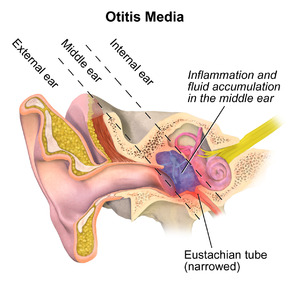
Acute Otitis Media (AOM):
AOM is a sudden middle ear infection that can cause pain and fever. It is most common in children and usually occurs due to a cold or other respiratory infections.
Treatment:
Antibiotics: For severe cases of AOM, antibiotics can help clear the infection.
Pain relief: pain relievers like ibuprofen or acetaminophen can help relieve pain and reduce fever.
Decongestants: Decongestants can help relieve pressure in the ear and promote healing.
Otitis Media with Effusion (OME):
OME is a buildup of fluid in the middle ear without signs of infection. It can cause hearing difficulties, muffled hearing, and occasional ear pain.
Treatment:
Watchful waiting: In some cases, the fluid will clear on its own, and no treatment is needed.
Decongestants: Decongestants can help relieve pressure in the ear and promote fluid drainage.
Ventilation tubes: In severe cases, surgery may be necessary to place ventilation tubes in the eardrum.
Chronic Otitis Media:
Chronic otitis media is a persistent or recurring middle ear infection. It can cause damage to the ear and hearing loss if not treated properly.
Treatment:
Antibiotics: Antibiotics are often used to clear the infection.
Surgery: In severe cases, surgery may be necessary to repair damage to the ear or to remove fluid from the middle ear.
Hearing aids: If hearing loss occurs, hearing aids can help improve communication and quality of life.
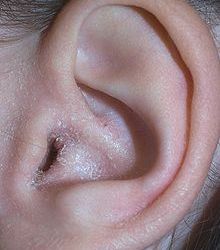
Swimmer’s Ear (Otitis Externa):
Swimmer’s ear is an infection of the outer ear canal caused by bacteria or fungus. It can cause pain, redness, itching in the ear, and discharge.
Treatment:
Antibiotics: Antibiotics can help clear the infection.
Pain relief: pain relievers can help relieve pain and reduce swelling.
Cleaning the ear: Keeping the ear dry and clean can help prevent further infection.
Prevention:
Avoid exposure to water: To prevent swimmer’s ear, avoid exposure to water and keep the ears dry.
Treat colds and other respiratory infections promptly: To prevent AOM, treat colds and other respiratory infections promptly.
Avoid exposing the ear to irritants: To prevent OME, avoid exposing the ear to irritants like smoke and loud noises.
Practice good hygiene: To prevent all types of ear infections, practice good hygiene and keep the ears clean.
Ear infections can be painful and debilitating, but there are many treatments available to help relieve symptoms and promote healing. With proper care and treatment, most people with ear infections can make a full recovery. If you suspect you have an ear infection, visit Dr. Ravinder Gera an ear specialist at Gurgaon ENT for a proper diagnosis and treatment plan.
0 notes
Text
Sinus Surgery: A New Hope for Sinusitis Sufferers
Sinusitis, a condition characterized by inflammation of the sinuses, is a common ailment that affects millions of people worldwide. The symptoms of sinusitis, which include headaches, facial pain, nasal congestion, and difficulty breathing, can be debilitating and significantly impact a person's quality of life. Traditional treatment options for sinusitis, such as antibiotics and decongestants, can provide temporary relief, but they fail to address the underlying issue in many cases.
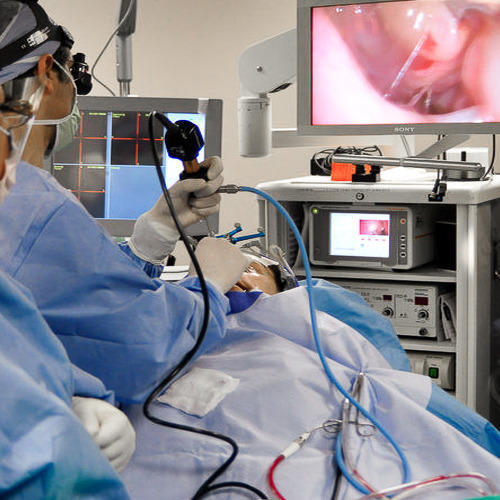
This is where sinus surgery comes in. Sinus surgery is a procedure that aims to open up blocked sinus passages and restore normal sinus drainage. The surgery is performed by an ear, nose, and throat (ENT) specialist, also known as an otolaryngologist, using endoscopic techniques. This means that the surgery is performed using a tiny camera called an endoscope, which is inserted into the nose to visualize the sinuses and guide the surgeon during the procedure.
There are different types of sinus surgery, depending on the patient's specific needs. The most common type of sinus surgery is called functional endoscopic sinus surgery (FESS), which involves removing any blockages in the sinus passages and correcting any structural abnormalities. Other types of sinus surgery include image-guided surgery, balloon sinuplasty, and computer-assisted surgery.
Sinus surgery can provide long-term relief for sinusitis sufferers. The procedure can clear blocked sinus passages, reduce inflammation, and improve the overall function of the sinuses. In addition to reducing the symptoms of sinusitis, sinus surgery can also improve a person's overall quality of life.
However, it is essential to note that sinus surgery is not for everyone. The best candidates for sinus surgery are those who have tried other treatment options and have not seen improvement. It's also important to discuss with your doctor if you have any other health condition that might affect the healing process or if you have allergies or other adverse reactions to anesthesia.
In conclusion, sinus surgery is a new hope for sinusitis sufferers who have exhausted other treatment options. The procedure can provide long-term relief and improve the overall function of the sinuses, leading to a better quality of life. Suppose you are suffering from chronic sinusitis and are considering sinus surgery. In that case, it is essential to consult an experienced ENT specialist such as Dr. Ravinder Gera at Gurgaon ENT to discuss the best treatment for you.
0 notes
Text
What to Expect During an Ear Exam
If you're due for an ear exam or have never had one, you may wonder what to expect during the appointment. Ear exams are crucial to maintaining your ear health and identifying any potential issues early on.

Here's what you can expect during an ear exam with an ear specialist:
Medical history review: Your specialist will likely ask about your medical history, including any previous ear issues or surgeries and any medications you may be taking. It's essential to be honest, and thorough during this process to help your specialist get a complete picture of your ear health.
Physical examination: Your specialist will perform a physical exam of your ears, including checking for any visible abnormalities or signs of infection. They may also use a lighted instrument called an otoscope to look inside your ear canal and eardrum.
Hearing test: During a hearing test, your specialist will play a series of tones at different volumes and pitches and ask you to indicate when you hear them. This test helps determine if you have any hearing loss and, if so, the extent of it.
Balance test: Your specialist may also perform a balance test to check for any problems with your vestibular system (the system responsible for balance and coordination). This may involve standing on one foot, walking straight, or following an object with your eyes.
Treatment plan: If your specialist identifies any ear issues during the exam, they will discuss a treatment plan with you. This may include medications, lifestyle changes, or further testing or treatment.
Overall, an ear exam is a relatively quick and painless process that can help identify and address any ear-related issues early on. Don't hesitate to schedule an appointment with us if you have any concerns about your ear health. Contact us or visit Dr. Ravindar Gera at Gurgaon ENT clinic.
0 notes
Text
What is a throat infection?
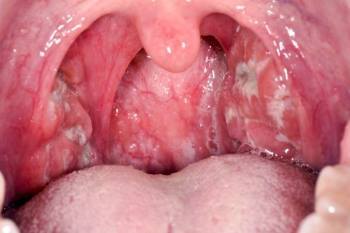
A throat infection, also known as pharyngitis, may be caused by a bacterial or viral infection that causes inflammation of the throat tissues, resulting in redness, discomfort, and swelling of the throat walls or structures.
The pharynx, or throat, is the tube-like structure that transports food to the esophagus and air to the windpipe (called the larynx). Infectious agents of the throat are most often introduced through the mouth or nose. Many of these diseases are caused by viruses, while others may be caused by bacteria (such as Streptococcus pyogenes, or group A Streptococcus). The agents that cause the painful and well-known condition known as strep throat are streptococcal bacteria. Schedule your appointment with throat specialists in Gurgaon.
The most common symptoms of a throat infection are discomfort and a sense of heat in the throat or pharynx. Other structures in the throat, especially the tonsils, can be affected by the infection (when it is referred to as tonsillitis). Symptoms may vary from mild to extreme, and they may or may not be accompanied by fever, cough, congestion, and other flu-like symptoms like body aches. Swollen lymph nodes in the neck are another possibility.
Most throat infections, especially those caused by viruses, resolve on their own, while some bacterial infections can be treated effectively with antibiotics.
if you are experiencing serious symptoms such as choking or severe difficulty breathing, which may be accompanied by pale or blue lips, a rapid heart rate (tachycardia), and anxiety; a high fever (higher than 101 degrees Fahrenheit); sudden swelling of the tongue or throat structures; a change in the level of consciousness or alertness, such as passing out or being unresponsive; or a change in the level of consciousness or alertness.
You may also have less severe signs or illnesses that need to be checked. If you have white spots at the back of your throat or on your tonsils, if you are being treated for a throat infection but mild symptoms recur or are chronic, or if you have any issues, seek medical attention right away.
What are the signs and symptoms of throat infection?
You can have signs of a throat infection for several weeks at a time. It is important to note that just because these symptoms go away during treatment for a bacterial throat infection does not mean that the infection has gone away: you must continue to take your medicine as prescribed. Seek medical attention if any of these symptoms worsen, it becomes difficult to breathe, or the temperature rises above 101 degrees Fahrenheit.
The typical symptom of a throat infection
Depending on the cause or severity of the infection, you may or may not experience any of these symptoms. All of these symptoms can become serious at times. Typical throat infection signs include:
The ache in the body
Coughing up clear, yellow, light brown, or green mucus is possible.
Breathing difficulties (ranging from mild to severe)
Swallowing Difficulties
Congestion or dry throat
Lymph nodes or tonsils that are enlarged
Chills and fever
hoarseness
Tonsils or throat are covered with pus or white spots.
Throat discomfort
Serious symptoms that could signify a life-threatening condition
If left untreated, throat infection can become life-threatening if the airway is cut off or if the infection spreads into the bloodstream and causes rheumatic fever or sepsis (a life-threatening bacterial blood infection). Seek medical attention right away if you see pus or white spots on your tonsils or at the back of your throat.
Changes in consciousness or alertness
suffocation
Confusion or lack of consciousness, even for a short period
Lethargy, fainting, or a shift in state of consciousness
A fever is present (higher than 101 degrees Fahrenheit)
Jerky movements or joint pain
Severe trouble breathing, possibly accompanied by pale or blue lips and a rapid heart rate (tachycardia)
Extreme agony
Swelling of the tongue or throat structures that occurs suddenly
What is the cause of throat infection?
Viruses or bacterial infections are the most common causes of throat infections (e.g., strep throat). The flu (influenza) and bacterial mononucleosis are two viral causes of sore throat. Typically, bacterial and viral throat infections are infectious.
What are the warning signs of throat infection?
A variety of factors increase the likelihood of contracting a throat infection. Not all with risk factors will develop a throat infection. Among the risk factors for throat infection are:
Either advanced or very young age
Closed-off job or living areas
Exposure to densely populated areas
Immune deficiency
lowering your chances of getting a throat infection
You will reduce the chances of getting a throat infection by doing the following:
Sharing food and consuming utensils, cups, and glasses is discouraged.
Using sanitizing agents on phones, keyboards, remote controls, and other common surfaces
As soon as possible, ventilate your work and living spaces.
Hand washing regularly
What is the treatment for throat infection?
Prevention is the most critical step in treating a throat infection. Infections will, however, occur even with the most diligent efforts. Many throat infections, fortunately, resolve on their own over time or are normally curable with prompt treatment with antibiotics such as amoxicillin or penicillin and, if necessary, fever-reducing agents.
If your doctor suspects an infection, you will most likely be given a throat culture (a swab of mucus or a fluid sample for laboratory analysis) to determine the source of your infection. Antibiotic therapy is the mainstay of bacterial infection treatment and is extremely successful. To prevent reinfection or recurrence, strictly adhere to your treatment plan and take all drugs as directed.
Antibiotics that are used to treat a throat infection
Antibiotics are the standard treatment for bacterial throat infections such as strep throat, though they are primarily used to avoid uncommon but severe complications such as rheumatic fever.
What you can do to improve your throat infection
In addition to strictly adhering to your prescription schedule, you can alleviate any sore throat symptoms by:
Avoiding smoke and chemical irritants when recovering
Drinking plenty of fluids, including both warm and cold caffeine-free beverages
Consuming iced pop treats to relieve throat pain and heat
Using saltwater as a gargle
Getting enough rest
Using steam to humidify air passages
Taking as much time as possible to rest the speech
Throat lozenges the sucking
Pain and fever should be treated as instructed.
For throat infection book your appointment online with the best ent doctor in Gurgaon.
0 notes
Text
What is a common cold?
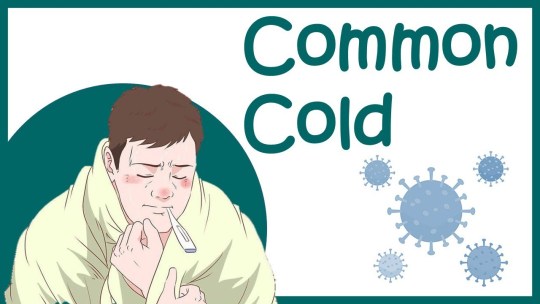
A cold, also known as a common cold, is a condition characterized by a cough, runny nose, scratchy throat, fever, and nonstop sneezing. It is a viral infectious disease of the upper respiratory tract that mainly affects the nose and, to a lesser extent, the sinuses, ears, and bronchial tubes. Call us and schedule your appointment withanent surgeon in Gurgaon.
Common Cold Causes
Viruses cause the common cold. Among them are the following:
Rhinovirus – This virus usually infiltrates your system in the early fall, spring, and summer. They are responsible for 10% to 40% of colds. Even though these are the most common viruses that affect you, they are unlikely to make you seriously ill.
Coronavirus – This virus attacks the human body in the winter and early spring. This virus is responsible for 20% of colds. There are over 30 different types of coronaviruses, with about 3 or 4 of them being dangerous.
RSV and parainfluenza – These tiny organisms cause serious infections in young children, such as pneumonia.
Pneumonia is a lung infection that causes a cough, fever, and difficulty breathing. Any additional signs maybe –
A cough, for example. mucus (sputum) from your lungs, which may be rusty, green, or blood-tinged.
diarrhea
fever
Chills from shaking and “teeth-chattering”
Rapid breathing and a sense of being out of the air
Rapid pulse
Chest pain that worsens when you cough or breathe in
Nausea and vomiting
Feeling very tired or frail
An individual infected with the common cold could infect you. You are more likely to become contaminated by germs or viruses if you touch surfaces or objects used by them that contain germs and then touch your nose or mouth.
If you are near a cold-infected individual, their sneeze can contaminate the air you breathe passively.
Cold infection begins when a virus attaches to the lining of the nose or mouth. The body’s immune system sends out white blood cells (WBC) to attack the invader, and this is how cold is defeated.
Common Cold Signs and Symptoms
When a cold strikes, the following symptoms are common:
Primary Complaints
Sore or scratchy throat
Nose bleeds
Nose congestion
Coughing
Runny Nose
Wet eye
Secondary Complaints
A fever is present.
Muscle pain
Tiredness
A migraine
Appetite loss
Risk factors
Colds can strike at any time of year, but certain factors can increase the risk:
being a young child or an elderly person
a weakened immune system
Colds are more common in the winter, so seasonal factors play a role.
being near someone who has cold
complications
A cold is typically not extreme, and it usually goes away after 7–10 days.
Complications do, however, arise from time to time. Those with a compromised immune system are more likely to be affected.
They are as follows:
bronchitis
Serious bronchitis
respiratory infection
the croup
Otitis media is a form of ear infection (middle ear infection)
throat infection (strep throat)
Asthma and chronic obstructive pulmonary disease (COPD), which involves emphysema and chronic bronchitis, may be exacerbated by a cold.
Call us and schedule your appointment with the best ent surgeon in Gurgaon.
Prevention
It is almost impossible to fully avoid the spread of colds, but you can reduce the risk of catching a cold by taking some precautions.
Wash your hands often – This is possibly the most effective way to avoid the spread of a cold or some other type of infection. Use hand sanitizer while you are in public places, and always wash your hands before eating. Teach children the value of handwashing as well.
Avoid rubbing your face – Try not to touch your face, mouth, nose, or eyes when you are near someone who has a cold.
Control stress – People who are often under emotional stress have a poorer immune system, which means they are more susceptible to catching a cold. Reduce depression and live a healthier lifestyle.
Keep household surfaces tidy, such as doorknobs, drawer pulls, keyboards, light switches, telephones, remote controls, countertops, and sinks. These are the locations where viruses can be found for hours after an infected person has used them.
Avoid smoking – Cigarette smoke can increase your susceptibility to colds and other infections. Also, avoid passive smoking.
Drink plenty of water – Water, milk, clear broth, warm lemon water, chicken soup, and other warm fluids are all good options. These will assist you in avoiding a cold or flu.
Treatments
A cold has no remedy, but medication will help manage symptoms.
Here are some pointers:
To avoid dehydration, drink plenty of fluids.
Get a lot of rest.
To relieve pain and discomfort, take over-the-counter medications.
Inhale steam to help alleviate nasal inflammation.
For a sore throat, gargle with saltwater. For colds, people use a variety of natural remedies. Some remedies, such as drinking warm lemon and honey, can be beneficial. However, not all of them have empirical evidence proving their usefulness. Cold remedies are available over the counter in drugstores, hospitals, and online. If complications occur, a doctor can prescribe antiviral medication or antibiotics, depending on the type of complication. Call us and schedule your appointment with the best ent surgeon in Gurgaon.
1 note
·
View note